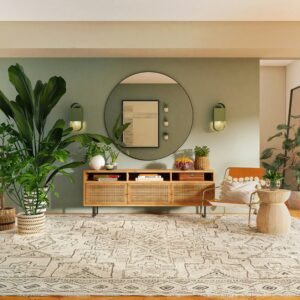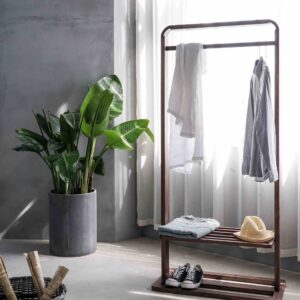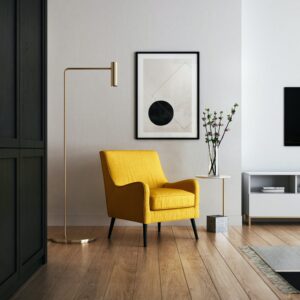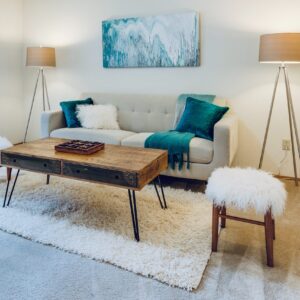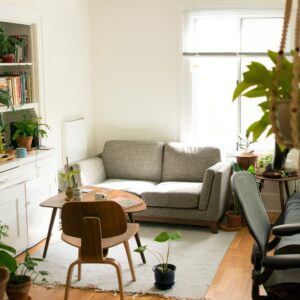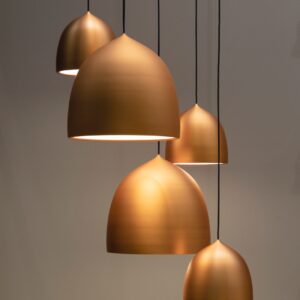Mixing patterns and textures in interior design for a unique look
Harmony in Diversity: Mastering the Art of Mixing Patterns and Textures in Interior Design
Introduction: As an expert interior designer, I am constantly inspired by the ability to create unique and visually striking spaces through the artful combination of patterns and textures. The interplay of different elements adds depth, character, and a touch of individuality to any room. In this blog, I’ll share insights and tips on how to master the art of mixing patterns and textures to achieve a harmonious and captivating interior design.
- Start with a Unified Color Palette: The foundation of successful pattern and texture mixing lies in a unified color palette. Choose a cohesive range of colors that will tie together the various patterns and textures in the room. This provides a sense of continuity and prevents the space from feeling chaotic.
- Scale and Proportion Matter: When combining patterns, pay attention to scale and proportion. Mix large-scale patterns with smaller ones to create balance. For example, pair a bold, oversized floral print with smaller geometric patterns for a visually interesting but not overwhelming look.
- Maintain a Style Consistency: While experimenting with different patterns and textures, maintain a level of style consistency throughout the room. Whether you’re going for a bohemian, modern, or traditional look, choose patterns and textures that align with your chosen style for a cohesive and intentional design.
- Varied Textures for Visual Interest: Incorporate a mix of textures to add depth and tactile interest to your space. Combine smooth surfaces with rough textures, soft fabrics with hard materials. This diversity enhances the visual and sensory experience, creating a layered and inviting atmosphere.
- Use a Dominant Pattern as a Focal Point: Choose one pattern to serve as the dominant focal point in the room. This could be on a statement piece of furniture, an accent wall, or even a large area rug. Once you establish the dominant pattern, use complementary, rather than competing, patterns to enhance the overall design.
- Experiment with Pattern Types: Play with different types of patterns, such as stripes, florals, geometrics, and abstract prints. Mixing pattern types adds visual interest and complexity to the design. Just ensure that there’s a common thread, whether it’s color or style, tying them all together.
- Layer Patterns Gradually: If you’re new to mixing patterns, start by layering them gradually. Begin with a solid base and introduce patterns through smaller decor items like throw pillows, blankets, or artwork. As you become more comfortable, you can experiment with larger patterns on furniture or walls.
- Consider Textures in Large Furniture Pieces: Large furniture pieces, such as sofas or accent chairs, offer an excellent opportunity to introduce both patterns and textures. Opt for upholstered furniture with interesting patterns while keeping the overall color palette cohesive. This anchors the room while adding visual intrigue.
- Mix Timeless Patterns with Trendy Accents: Combine timeless patterns that have enduring appeal with trendy, of-the-moment accents. This balance ensures your design stands the test of time while still feeling fresh and current. Timeless patterns like stripes or checks can act as a versatile canvas for trendier accessories.
- Bring in Solid Colors as Balancers: Use solid colors strategically to balance out the patterns and textures. Incorporate solid-colored furniture or decor items to create visual breaks and prevent the room from feeling overly busy. This allows the patterns to shine without overwhelming the space.
- Consider the Room’s Function: The function of the room should influence your pattern and texture choices. For instance, a bedroom might benefit from soothing and soft textures, while a living room could embrace a mix of vibrant patterns to create a lively atmosphere. Tailor your choices to enhance the room’s purpose and mood.
- Experiment with Contrasting Styles: Don’t be afraid to experiment with contrasting styles of patterns and textures. Pairing unexpected combinations, like a sleek, modern pattern with a vintage-inspired texture, adds an element of surprise and personality to the design.
Mastering the art of mixing patterns and textures in interior design opens up a world of possibilities for creating spaces that are as unique as they are inviting. By understanding the principles of color, scale, and style consistency, you can confidently experiment with various patterns and textures to achieve a harmonious and captivating look. Embrace the diversity, let your creativity flourish, and transform your living spaces into visually stunning works of art.
Frequently Asked Questions (FAQs) – Mixing Patterns and Textures in Interior Design for a Unique Look
Q1: Is it okay to mix different patterns and textures in interior design, or should I stick to one style? A1: Absolutely, mixing patterns and textures can add depth and interest to your space. It’s a creative way to achieve a unique look, but it requires thoughtful consideration to maintain harmony. Start with a cohesive color palette to tie everything together.
Q2: How can I successfully mix patterns without creating a visually overwhelming space? A2: Stick to a limited color palette to create cohesion. Vary the scale of patterns, mixing larger prints with smaller ones. Balance busier patterns with solid colors or neutrals. Consider a unifying element, like a shared color or theme, to tie diverse patterns together.
Q3: Can I mix patterns in different rooms of my home, or should I stick to a consistent style throughout? A3: While consistency can create a cohesive look, mixing patterns in different rooms is entirely possible. Maintain a common color scheme or theme to tie the spaces together. This approach allows for individuality and adds interest to each room.
Q4: What are some guidelines for mixing patterns in upholstery and textiles? A4: Mix patterns of different scales—for example, pair a large floral print with a small geometric pattern. Introduce solids or neutrals to break up patterns. Ensure a balance between busy and more subdued prints to avoid overwhelming the space.
Q5: How can I incorporate texture into a space without relying solely on patterns? A5: Texture adds depth and visual interest. Introduce textured elements through materials like wood, stone, metal, or fabric. Consider textured wall coverings, throw blankets, and pillows. This helps create a dynamic and inviting environment.
Q6: Can I mix patterns and textures in a minimalist or modern interior design? A6: Yes, you can incorporate patterns and textures into minimalist or modern designs. Opt for clean lines and neutral colors as a base, then introduce subtle patterns or textures in furnishings, rugs, or artwork. It adds warmth without compromising the design style.
Q7: What are some examples of successfully combining different textures in a room? A7: Pair smooth and shiny surfaces with rough textures—for instance, a sleek leather sofa with a chunky knit throw. Combine soft fabrics like velvet with hard materials like metal or glass. Mix matte and glossy finishes for contrast.
Q8: How can I mix patterns in a small space without making it feel cramped? A8: Stick to a limited color palette to create visual cohesion. Choose smaller-scale patterns to avoid overwhelming the space. Incorporate patterns strategically, such as on accent pillows, rugs, or smaller furniture pieces, while keeping larger elements more neutral.
Q9: Are there specific patterns or textures that complement each other particularly well? A9: Complementary patterns often share a similar color palette or theme. For example, florals can complement stripes if they share common colors. Mixing geometric patterns with organic ones, like botanical prints, can also create a visually appealing contrast.
Q10: Where can I find inspiration and guidance for mixing patterns and textures in interior design? A10: Explore design magazines, online platforms, and social media for inspiration. Look for interior design blogs and books that provide tips and examples. Experiment and trust your instincts—personal style plays a significant role in successful pattern and texture mixing.
In conclusion, the artful integration of patterns and textures in interior design is a masterful technique that transforms spaces into vibrant, dynamic expressions of individual style. Throughout this exploration, it becomes evident that the thoughtful combination of patterns and textures is not merely a design choice but a powerful tool to create a unique and visually captivating aesthetic.
As an expert interior designer, I emphasize the importance of balance and cohesion when mixing patterns and textures. The key lies in creating a harmonious interplay between different elements, ensuring that the various patterns complement rather than compete with each other. A cohesive color palette serves as a unifying thread, allowing disparate patterns and textures to come together in a visually pleasing manner.
Layering different textures adds depth and tactile richness to a space. Incorporating a mix of materials such as plush fabrics, sleek metals, natural fibers, and smooth surfaces contributes to a multi-dimensional and inviting environment. The tactile experience becomes an integral part of the design, creating a space that not only looks appealing but also feels engaging and comfortable.
Experimenting with scale is another essential aspect of successful pattern and texture mixing. Combining large-scale patterns with smaller, more intricate ones adds visual interest and prevents a space from feeling monotonous. This dynamic play of scale creates a sense of movement and energy within the design, ensuring that each element contributes to the overall composition.
The versatility of this design approach allows individuals to infuse their personality into a space, making it truly their own. Whether it’s combining bold geometric patterns with soft, textured fabrics or juxtaposing rustic textures with sleek modern elements, the possibilities are endless. It’s about breaking away from design conventions and embracing the unexpected to create a space that is as unique as its inhabitants.
In conclusion, mixing patterns and textures in interior design is an art form that invites creativity, experimentation, and personal expression. By understanding the principles of balance, cohesion, and scale, individuals can craft spaces that tell a story, evoke emotion, and capture the essence of their distinct style. The result is an interior that is not only visually stunning but also a testament to the beauty found in the harmonious coexistence of diverse patterns and textures.





